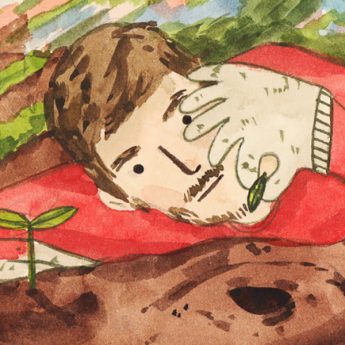Autism sufferer sheds new light on condition
The question of autism has always been—and remains—highly controversial. What exactly is it? Should it be diagnosed as a condition or merely seen as a behavioural difference?
For some time now, mental health experts have preferred to speak of the autistic spectrum, because of the wide divergence in diagnoses and behaviours.
There is no consensus on what causes it: theories range from genetics through environmental influences, such as heavy metals in the atmosphere, to various vaccination programmes.
Whatever the cause, the reality is that the number of children diagnosed as being on the spectrum is growing and, since it is a wide-spectrum disorder, no two people with autism will have exactly the same symptoms.
As research into the condition progresses, more of those symptoms are being understood, and the myths surrounding the condition are being debunked.
Perhaps the greatest of these is that people with autism do not feel love, happiness, sadness or emotional pain in the same way as others. This is far from the truth. Autism sufferers may not express these feelings in quite the same way, but it does not mean they are bereft of such emotions.
This is made eloquently plain in Naoki Higashida’s moving and inspiring book about his own experience, written when he was just 13 years old.
Naoki’s autism is so severe that spoken communication is virtually impossible, but thanks to his persistence and a dedicated teacher, he learned to spell out words on a grid that contained a Japanese alphabet.
The result is a book in which the young author sets out to answer 58 questions about what it is like to be autistic, for example: Why do you repeat certain actions again and again?; Why do you memorize train timetables and calendars?; and the one that gives the book its title: Why do you jump?
In addition, examples of Naoki’s short stories are provided therein, which immediately prove invalid another myth: that people on the autism spectrum have no imagination. Naoki has in fact published several works of fiction and non-fiction for which he has received awards. He also writes a blog.
The book under review fell into the hands of Keiko Yoshida, wife of the English novelist David Mitchell, together the parents of an autistic son. According to Mitchell, “The Reason I Jump was a revelatory god-send. It felt as if, for the first time, our own son was talking to us about what was happening inside his head, through Naoki’s words”.
Mitchell’s introduction is powerful, beginning as it does with an invitation for the reader to imagine a daily life in which you are unable to communicate even the most basic of needs, in which memories and thoughts and impulses bombard you and where your mind is “a room where 20 radios, all tuned to different stations, are blaring out voices and music. The radios have no off-switches or volume controls, the room you’re in has no door or windows, and relief will come only when you are too exhausted to stay awake”.
There is more, but this is just a small taste of the alarming portrait of what it is like to live on the spectrum.
Mitchell also talks honestly about what it is like to be a parent and caregiver—not, as he puts it, “a job for the faint-hearted”.
But as he points out, “during the 24/7 grind of being a caregiver, it’s all too easy to forget the fact that the person you’re doing so much for is, and is obliged to be, more resourceful than you in many respects”.
This is a remarkable book by an extraordinary author demonstrating “intellectual acuity and spiritual curiosity … and a puckish sense of humour”.
It is beautifully illustrated with a series of monochrome prints by the multidisciplinary duo Kai and Sunny, who have taken Naoki’s references to nature and landscapes as the inspiration for their imagery.







